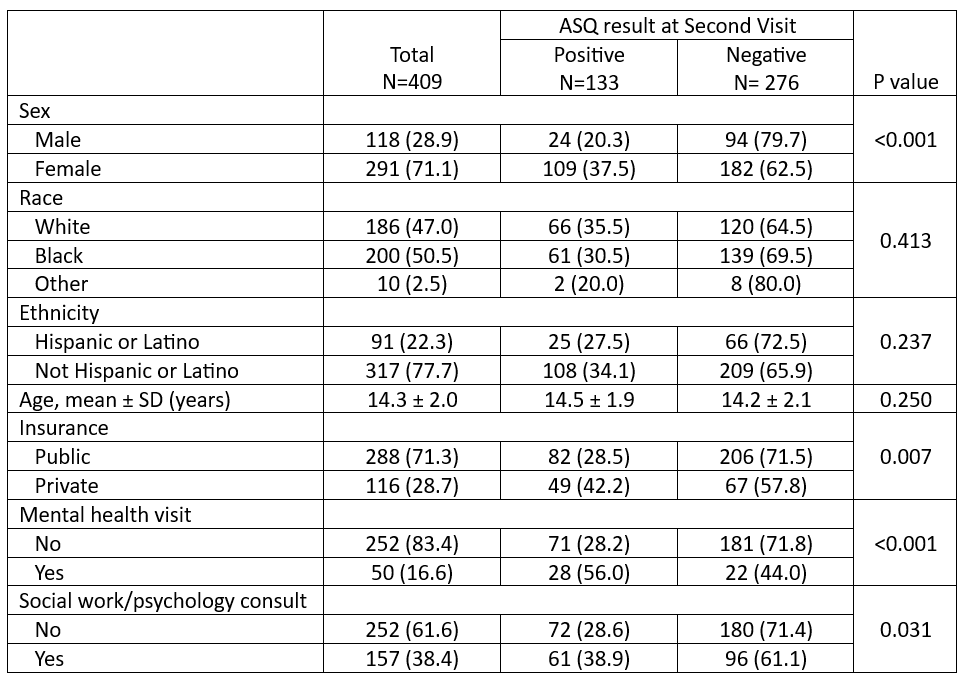Mental Health
Session: Mental Health 2
566 - Factors Associated with Continued Positive Suicide Screens among Youth in the Pediatric Emergency Department
Sunday, May 5, 2024
3:30 PM - 6:00 PM ET
Poster Number: 566
Publication Number: 566.1939
Publication Number: 566.1939
.jpg)
Michael K. Esson, Bachelor of Science (he/him/his)
Medical Student
Medical College of Wisconsin
Milwaukee, Wisconsin, United States
Presenting Author(s)
Background: Suicide rates among youth are rising. Many pediatric emergency departments (PEDs) have started screening for suicide risk; however, factors associated with continued positive suicide screening in PEDs are underexplored.
Objective: Determine associations between patient demographic and visit factors on continued positive suicide screen in the PED. Investigate associations between race, ethnicity, and sex assigned and the provision of social work or psychology consult at the index visit.
Design/Methods: Retrospective chart review of PED patients between 10/18/2018 and 6/6/2021, aged 11-18 years with positive Ask Suicide-Screening Questions (ASQ) during the index visit and at least one additional visit before 12/31/2021. A positive ASQ is a ‘yes’ response to any of the four to five questions, however, those with a ‘yes’ to historical question, ‘have you ever tried to kill yourself’ were excluded from analysis, as this should always remain a ‘yes’ response. Descriptive statistics were used to describe the data. Categorical variables were compared using Chi Square and continuous variables were compared using t-tests. Alpha of p< 0.05 was statistically significant.
Results: 409 patients were included in the analysis. 71.1% were females, mean age (at index visit) was 14.3 years, 50.5% identified as Black, and 22.2% identified as Hispanic/Latino.
Overall, 133 (32.5%) patients continued to have a positive ASQ at the second visit. Females were more likely to have continued positive ASQ compared to males (37.5% v 20.3%, p< 0.001). Patients with private insurance were more likely to have a continued positive ASQ compared to those with public insurance (42.2% v 28.5%, p= 0.007). Patients with a mental health chief complaint at the index visit were more likely to continue having a positive ASQ compared to those without a mental health complaint (56% v 28.2%, p< 0.001). Patient age, race, ethnicity, and having a primary care provider were not associated with a continued positive ASQ (Table 1).
Moreover, patients who received a social work or psychology consult at the index visit were more likely to have a continued positive ASQ compared to those who had not received a consult (38.9% v 28.6%, p= 0.031) (Table 1). Patient sex, race, and ethnicity at the index visit were not associated with differential provision of social work or psychology consult at the index visit.
Conclusion(s): Identifying youth more likely to have continued positive ASQ enables early intervention by health care providers, potentially leading to decreased youth suicide rates and overall better mental health outcomes.

